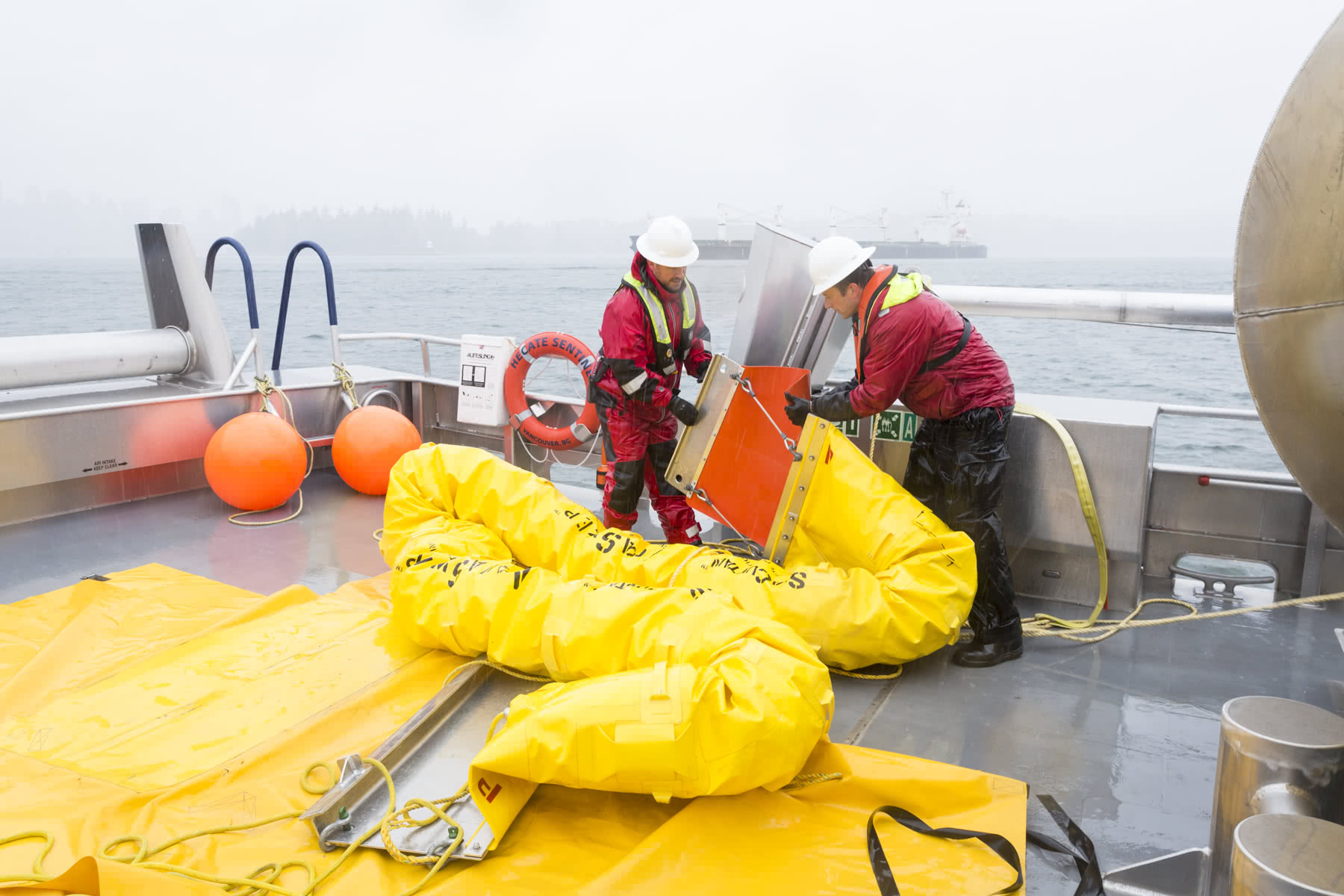Spill response technology is constantly evolving.
Drones, helicopters, state-of-the-art GIS systems, and underwater ROVs all aid WCMRC in protecting the West Coast of Canada. And, with work this important, you can rest assured WCMRC has the best that technology can offer.
Cutting Edge Technology At Our Fingertips
Technology for spill responses constantly changes and develops. In order to be able to operate and protect our coast to the best of our abilities, WCMRC utilizes the best available tech.
“The response readiness team (RRT) of our company uses state-of-the-art GIS software for mapping trajectory of spills. We use drones for aerial surveillance and spotting slicks so we can direct our assets for containment and recovery on the water towards concentrations of oil. We also have underwater Remotely Operated Vehicles (ROVs) for surveying sea floors. Helicopters are used in the case of major spills or major exercises to help spot and direct our efforts because it’s very difficult to see from the water. So, we use a lot of aerial surveillance on a large scale exercise or incident.” – Kyle Hujdic, Base Operations Supervisor, Sidney
Behind the Scenes
Kyle goes on to tell us about the behind-the-scenes work that goes into emergency spill response. He says, “there’s mapping and Geographic Information System (GIS) work that goes on all the time here.” Kyle, who was a GIS consultant prior to coming to WCMRC, explains the importance of using the technology. “There’s an entire side of our company, [RRT] looks at planning for geographical areas, so they look at a certain area and find out all the ecologically and culturally sensitive areas. For this, we work closely with First Nations communities along the coast.”
WCMRC also utilizes ecological data from the provincial and federal governments and maps all of it. They make incredibly detailed geographic response plans for our coastal areas. If there is an incident, WCMRC already has a plan in place. “We know where the high priority areas are to protect and we know what kind of resources we have in the area available to aid our efforts,” states Kyle.
Environmental Protectors
Even some companies who are not obligated by law to be involved with WCMRC are. Harbour Air, for example, pays fees to WCMRC not because they have to, but because they work out on the water, too. Named North America’s first carbon-neutral airline, Harbour Air also wants to protect the environment that provides them with their ‘office space’.
WCMRC itself is made up of those who protect the coasts BC is so famous for. The people employed at WCMRC are people who are passionate about our outdoors. They’re often fishermen, hunters, or those who simply love being on the West Coast; those who want to protect the place where they spend their days off (and often, days on). They’re the people who are passionate about taking care of the environment; they are the front line between pollutants and the coast.

